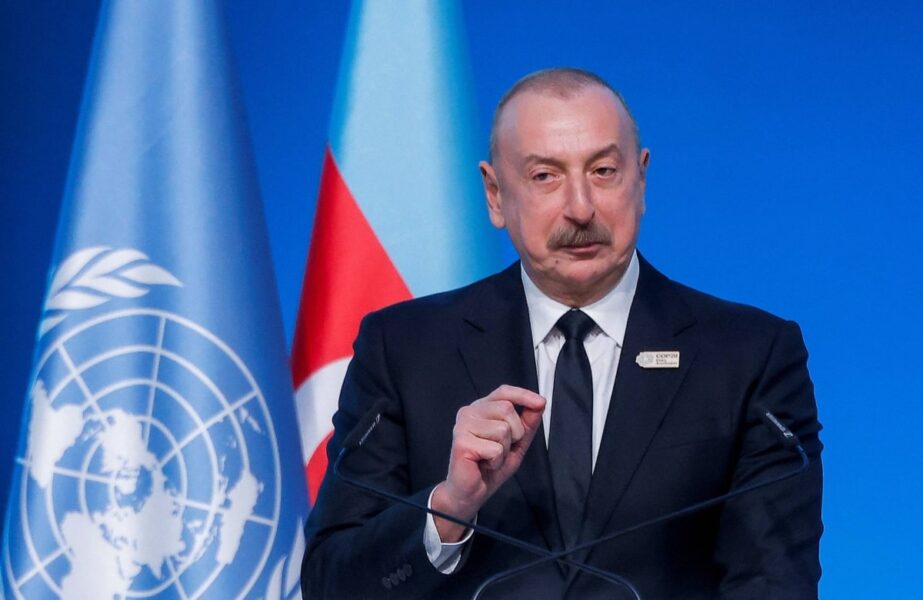US President Donald Trump’s strategy to expand domestic energy production and exports – by fast-tracking permits, easing climate regulations and introducing tax cuts – will encounter major hurdles, experts say.
These challenges include changing market realities, as well as Mr Trump’s own policies, such as rolling back the Inflation Reduction Act (IRA) and initiating trade wars with China and key allies, they suggest.
Following the declaration of a national energy emergency last month, the US Army Corps of Engineers has released data identifying more than 600 potential infrastructure projects, primarily within the energy sector, that may receive expedited review.
At the Future Investment Initiative Priority Summit in Miami on Wednesday, Mr Trump proposed cutting taxes for US oil and gas producers and allowing companies to expense 100 per cent of investments in domestic factory construction and other capital expenditure.
“The energy dominance agenda starts at home and it is already an uphill struggle against market dynamics,” said Francesco Sassi, research fellow at Ricerche Industriali Energetiche in Bologna. “Trump wants less state intervention and more market influence in shaping the energy strategies of American oil and gas giants.”
He promises tax cuts for producers, nudging some to favour the domestic market, “but what if the biggest opportunities lie abroad? Would they quietly accept trade barriers and US isolation?”
Mr Trump’s return has been a mixed bag for energy industry players so far, with tariff threats against Canada and Mexico – the largest suppliers of crude to the US – a move that will shrink margins for American refiners and force them to source crude from other markets.

Meanwhile, most US oil producers are not planning to boost output unless oil prices rise significantly.
“With US shale companies focusing on capital discipline, there are two ways that crude production could grow a bit faster – via a sustained oil price increase or via lower production costs,” Giovanni Staunovo, strategist at UBS, told The National.
Potential tax cuts will create “room to cut costs”, depending on their magnitude, said Mr Staunovo, who has maintained his US crude growth forecast at 300,000 barrels per day (bpd) this year despite recent developments.
This month, the US Energy Information Administration raised its forecast for 2025 domestic oil production to 13.59 million bpd, up from its previous estimate of 13.55 million, citing improved efficiency.
Oil prices have retreated from the highs reached after the Russia-Ukraine war, as western sanctions largely redirected Russian crude flows to the East, particularly China and India.
Dismantling IRA
Last month, the Trump administration ordered federal agencies to “immediately pause the disbursement of funds” under the Inflation Reduction Act, former President Joe Biden’s landmark legislation.
The future of numerous major clean energy projects, which were counting on federal funding and tax breaks, is now unclear.
The IRA also incentivised US oil and gas companies to invest in technology promoted by the legislation.
ExxonMobil’s planned blue hydrogen plant in Baytown, Texas, is expected to reach a final investment decision (FID) this year. The UAE’s Adnoc took a 35 per cent stake in the project last year and plans to transfer that stake to its subsidiary Fertiglobe.
“We’re obviously monitoring the geopolitical and regulatory environment right now,” Ahmed El Hoshy, chief executive of Fertiglobe, told The National in an interview last week. “For now, we see that things look like they’re still fine in terms of the IRA and what’s needed there. We’ll be working with our partner ExxonMobil on the FID plans for the project over the next several months.”
Occidental Petroleum, a major oil and gas company based in Houston, is lobbying the Trump administration to keep tax credits that support carbon capture and storage, as their first plant is scheduled to begin operations this year.
“President Trump knows the business case for this, I’ve had several conversations with him,” said Vicki Hollub, the company’s chief executive.
LNG impact
Last month, Mr Trump issued an order for the US to resume processing export permit applications for new LNG projects, reversing a ban placed by the previous administration.
However, even as the policy shift aims to boost American LNG exports, escalating trade tension with China threaten to undermine demand.

China’s retaliatory tariffs on US LNG, imposed in response to a 10 per cent tariff on Chinese goods, along with the prospect of an all-out trade war between the two countries, will make Chinese companies cautious about signing new long-term contracts with American LNG projects, analysts say.
Even without the effects of a trade war, increasing the supply of the supercooled fuel to the market will still take years. It typically takes two to five years after the FID for a facility to send out its first commercial shipment.
Future US LNG faces financing uncertainties, ship construction delays and Henry Hub-linked pricing, which makes it less competitive than Qatari LNG, Ruchdi Maalouf, independent arbitrator and a former LNG executive, told The National.
“Increasing gas production can happen fairly quickly, but building a new liquefaction plant takes us beyond Donald Trump’s term. There are so many unknowns that it is hard to speculate,” he said.
Norway-based consultancy Rystad Energy had earlier predicted that Mr Trump’s pro-energy agenda could help nearly double US LNG export capacity to 22.4 billion cubic per day (bcfd) in 2030, from 11.3 bcfd in 2023.
Opec policy
At the FII summit, Mr Trump thanked Saudi Arabia for hosting talks between Washington and Moscow last week, describing the kingdom as a “special place with special leaders.”
Saudi Crown Prince Mohammed bin Salman has vowed to invest $600 billion in the US over the next four years.
The US President’s remarks followed his call this month for Opec+ to increase crude production, as the US tightened sanctions on Iranian and Russian exports. However, the group left its production policy unchanged at its meeting on February 3.
The Opec+ group, which includes Russia, has withheld 5.86 million bpd of supply from the market, including voluntary output cuts of 2.2 million bpd that will be gradually eased, starting in April.
“We expect sanctions to force Iranian production lower later this year while the potential impact on Russian supply remains uncertain,” Energy Aspects said in research note last week.
Despite US pressure to increase output, Opec+ is expected to maintain current production levels until at least April without “sustained clarity” on sanctions, the consultancy said.
Earlier this month, Iranian President Masoud Pezeshkian urged Opec members to unite and prevent the US from pressuring any of them.



